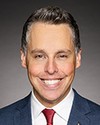In addition to making sure we have access to clean water and waste-water infrastructure that allows our communities to function, we need to realize the importance of continuing to invest in the things we can't see that unlock opportunities for what I'm sure is a top priority of nearly everyone sitting around this table, which is the need to build more homes. If we don't invest in the water and waste-water infrastructure that communities demand, we can't hope to even sustain the communities that we enjoy today, let alone experience the rate of growth that we would all like to see.
Coming from Nova Scotia, it is particularly important to me that we continue to invest in climate-resilient infrastructure. Over the past 12 months of my life—a little more than a year, as of just a couple of weekends ago—we've seen a once-in-a-century hurricane and once-in-a-century floods and wildfires that we have never seen before. These have caused ungodly consequences for the people who live in my home province. They threaten critical infrastructure. We know that we need to continue to reduce our emissions if we're going to combat climate change, but we also have to build communities that can better adapt to the consequences of climate change that are now baked in, given the pollution that has occurred across the world for the past many decades.
In addition to continuing to invest in infrastructure that moves people and goods, allows us to have livable communities, expands water treatment so that we can build homes, and protects us against the consequences of climate change, we also need to be investing in communities and community assets: recreational properties, cultural properties, heritage properties. When we actually make the kinds of investments that make communities not just places where a person can find somewhere to sleep, but places where they can enjoy a full and meaningful life by engaging fully in their community and participating in activities that allow them to experience fulfilment, we can build healthier people and healthier communities.
We need to work together across levels of government. If we do that, I'm convinced that we can build a more prosperous, sustainable and healthy Canada for everyone in every region of the country.
Mr. Chair, you've given me the signal that my time is up. I'm happy to respect the clock and turn it over to you for questions.
Thank you.





